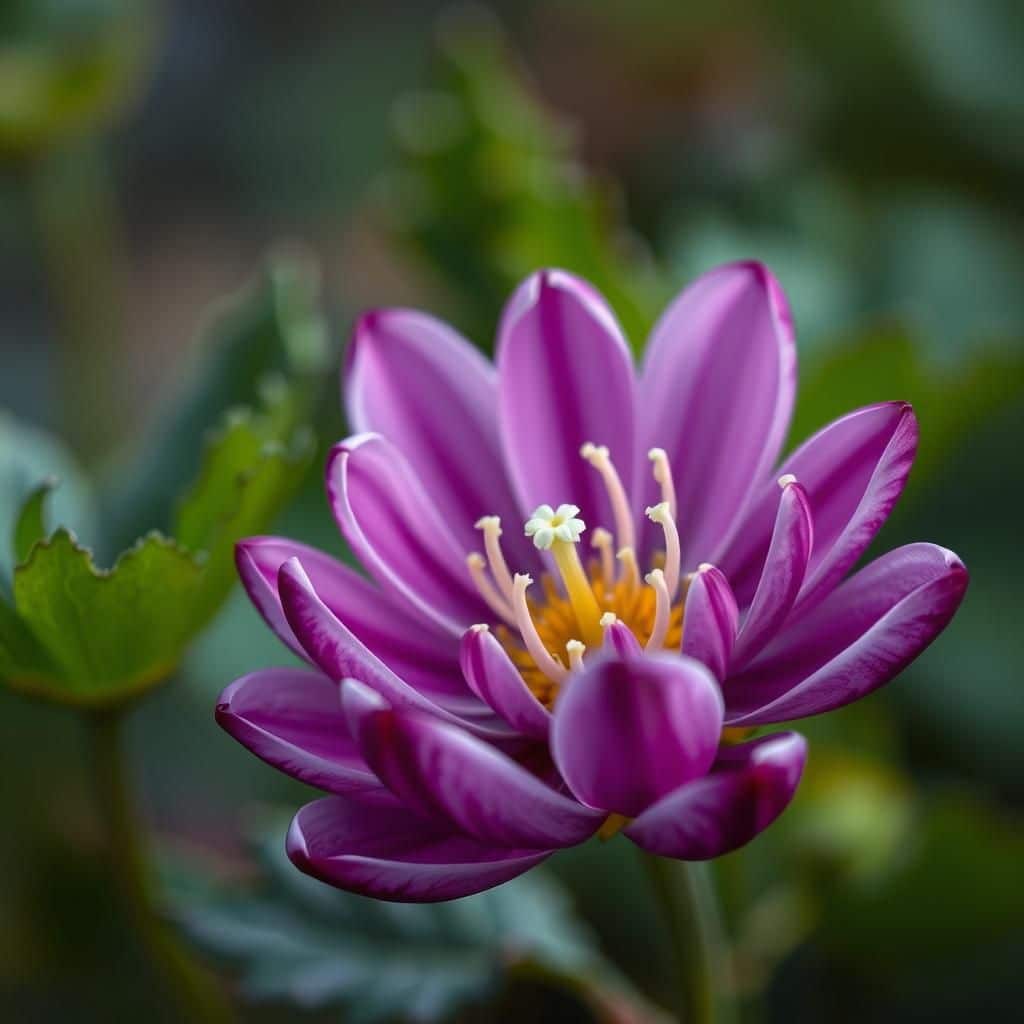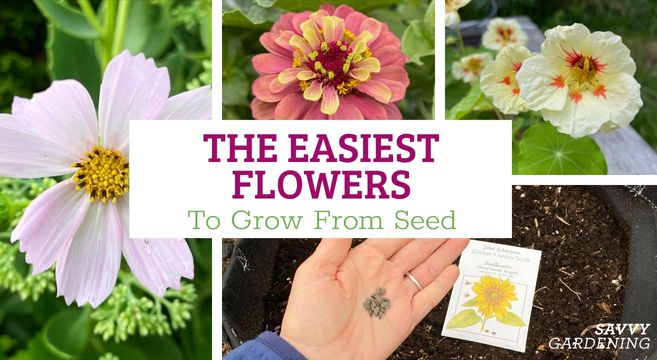Discover What's the Easiest Flower to Keep Alive: Top Picks for Beginners

For those new to the world of gardening, choosing the right flower can be a daunting task. With countless options available, it’s essential to select blooms that not only thrive in various conditions but are also easy to maintain. This article explores the easiest flowers to keep alive, perfect for beginners who may feel overwhelmed by the demands of gardening. From resilient perennials to cheerful annuals, we’ll highlight top picks that offer vibrant colors and minimal care. By the end, you'll be inspired to cultivate a blossoming garden, even if you lack a green thumb.
What is the Easiest Flower to Keep Alive?
The easiest flower to keep alive is often considered to be the African Violet. This hardy plant is known for its ability to thrive in various indoor conditions, making it ideal for both novice and experienced gardeners. African Violets require minimal light and can adapt to different humidity levels, as long as they are watered properly and placed in a well-draining potting mix. With their vibrant, colorful blooms and relatively low maintenance needs, African Violets can flourish even in less-than-ideal conditions, providing a long-lasting source of enjoyment for flower lovers.
Benefits of Choosing African Violets
African Violets are popular among houseplant enthusiasts due to their low maintenance requirements and ability to bloom year-round. These plants are perfect for individuals who want to enjoy vibrant flowers without spending too much time on upkeep. They can thrive in lower light conditions and require watering only when the soil feels dry, which makes them very forgiving to forgetful gardeners.
Basic Care Tips for African Violets
To ensure your African Violet stays healthy, provide it with indirect sunlight for about 12 hours a day. It's best to water these plants with lukewarm water and allow the soil to partially dry between waterings. Additionally, using a high-quality, well-draining potting mix can prevent issues like root rot. Fertilizing every couple of weeks during the growing season helps maintain strong blooms and lush foliage.
Common Mistakes to Avoid
One of the most frequent mistakes made with African Violets is overwatering, which can lead to root rot. It's essential to check the soil moisture before watering. Another common error is exposing the plant to direct sunlight, as this can scorch the leaves. Lastly, using cold water directly from the tap can shock the roots; instead, opt for room temperature water for the best results.
How to Propagate African Violets
Propagating African Violets is a straightforward process that can be done using leaf cuttings. Simply select a healthy leaf, cut it with a clean blade, and place it in a small container with moist potting mix. Make sure to keep the cutting in a warm, humid environment until roots develop. This method not only helps you expand your collection but also gives friends or family beautiful plants as gifts.
Alternative Easy-to-Care Flowers
If you're looking for other easy-to-care flowers, consider the Peace Lily, Zinnia, or Marigold. Each of these options requires little attention and can adapt well to a variety of conditions. Peace Lilies, for example, thrive in low light and can survive with minimal watering. Zinnias and Marigolds, on the other hand, are often grown in gardens and can provide bright colors with minimal effort.
| Flower | Light Requirements | Watering Needs | Blooming Period |
|---|---|---|---|
| African Violet | Indirect sunlight | Moderate, allow soil to dry | Year-round |
| Peace Lily | Low light | Low, moist soil | Spring-Summer |
| Zinnia | Full sun | Regular, keep soil moist | Summer-Fall |
| Marigold | Full sun | Regular, allow to dry between | Summer-Fall |
What is the most low maintenance flower?
:max_bytes(150000):strip_icc()/low-maintenance-flowers-you-cant-kill-4864031_final-da20e03588614b1f8954786b026d820e.png)
The most low maintenance flower is often considered to be the Zinnia. Zinnias are known for their vibrant colors and ability to thrive with minimal care. They are drought-tolerant and can flourish in a variety of soil types, making them ideal for gardeners looking for flowers that require less attention and upkeep.
Characteristics of Zinnias
Zinnias possess several characteristics that contribute to their status as low maintenance flowers.
- Diversity of Colors: Zinnias come in a wide range of colors, including pink, red, orange, yellow, and white, which allows for a bright and cheerful garden.
- Resilience: They are resilient to various environmental conditions, such as heat and drought, making them suitable for a variety of climates.
- Attract Pollinators: Zinnias attract beneficial insects, like butterflies and bees, which can help pollinate other plants in the garden.
Ideal Growing Conditions
Zinnias thrive best in specific growing conditions that make them easy to maintain.
See also:
- Sunlight: They require full sunlight, ideally 6 to 8 hours a day, which enhances their blooming potential.
- Soil Type: Well-drained soil is essential, but zinnias are not picky and can adapt to poorer soils.
- Watering: While they tolerate drought, consistent watering during dry spells promotes better growth and flower production.
Common Problems and Solutions
Despite their low maintenance nature, zinnias can experience some common issues that are easily manageable.
- Pests: Issues such as aphids or spider mites can occur, but can be handled with natural insecticides or by introducing beneficial insects.
- Powdery Mildew: This fungal disease can affect zinnias, especially in humid conditions; avoiding overhead watering can help prevent it.
- Wilting: Overwatering can lead to wilting; ensuring well-draining soil helps mitigate this issue.
Seasonal Care Tips
To ensure healthy growth throughout the season, consider these care tips.
- Deadheading: Removing spent flowers encourages more blooms and prolongs the flowering period.
- Fertilization: A balanced fertilizer can be applied at the beginning of the growing season to promote robust growth.
- Cutting Back: At the end of the season, cut back the plants to encourage re-growth next year if they are perennial in your area.
Varieties of Zinnias
There are numerous varieties of zinnias that cater to different gardening preferences.
- Uproar Rainbow: This compact variety features vibrant colors and is perfect for border planting or containers.
- State Fair: Known for their tall stature and large blooms, these make a bold statement in any garden.
- Miniature Zinnias: These petite flowers are great for smaller gardens or container arrangements.
What is the easiest flower to grow for beginners?

The easiest flower to grow for beginners is often considered to be the marigold. These vibrant flowers are not only beautiful but also resilient and adaptable, making them ideal for novice gardeners. Marigolds thrive in a variety of conditions, require minimal care, and can bloom continuously throughout the growing season.
The Benefits of Growing Marigolds
Marigolds provide several benefits that make them a top choice for beginners:
- Easy to Grow: They can be sown directly into the soil or started indoors and transplanted.
- Attract Pollinators: Marigolds attract bees and butterflies, helping to pollinate other plants in your garden.
- Pest Repellent: Their strong scent can deter certain pests, making them a natural companion plant.
Growing Conditions for Marigolds
To ensure successful growth, marigolds prefer:
- Sunlight: They thrive in full sun, requiring at least 6 hours of direct sunlight each day.
- Well-Drained Soil: Use soil that drains well to prevent root rot and encourage healthy growth.
- Moderate Watering: Water them when the top inch of the soil is dry; they do not like soggy conditions.
Different Varieties of Marigolds
There are several types of marigolds that beginners can choose from:
- French Marigolds: Smaller and bushier, often with bicolor flowers.
- African Marigolds: Larger blooms with vibrant colors, ideal for making bold statements in the garden.
- Signet Marigolds: Delicate and fragrant, perfect for edible gardens as they are often used in salads.
When to Plant Marigolds
Timing is crucial for successful marigold cultivation:
- Spring Planting: Sow seeds after the last frost date in your area to ensure optimal growth.
- Indoor Start: Begin seeds indoors 6-8 weeks before the last frost for an earlier bloom.
- Continuous Planting: Stagger planting every few weeks for a prolonged flowering season.
Tips for Maintaining Marigolds
To keep marigolds healthy and blooming:
- Regular Deadheading: Remove spent flowers to encourage more blooms and prolong the blooming period.
- Fertilization: Use a balanced fertilizer sparingly to avoid excessive foliage growth at the expense of blooms.
- Pest Monitoring: Keep an eye out for aphids or beetles, which can be easily managed with natural remedies.
What is the lowest maintenance flower for pots?


The lowest maintenance flower for pots is often the petunia. Petunias are exceptionally hardy and can thrive in various conditions with minimal care. They are known for their vibrant colors and can bloom throughout the growing season, making them a favorite for container gardening. Here are some of the most compelling reasons why petunias are considered low maintenance:
- Drought Tolerance: Once established, petunias can survive with minimal watering. They do best when allowed to dry out slightly between waterings, making them ideal for busy gardeners.
- Disease Resistance: Petunias are relatively resistant to many common plant diseases, reducing the need for chemical interventions or constant monitoring.
- Self-Cleaning: Many modern petunia varieties are self-cleaning, meaning they do not require deadheading to maintain their appearance, saving both time and effort.
Types of Low Maintenance Flowers for Pots
There are several types of low maintenance flowers you can consider for pots along with petunias. Some of these include:
- Marigolds: Bright and cheerful, they bloom profusely and deter pests.
- Portulaca: Also known as moss rose, they thrive in hot, dry conditions.
- Geraniums: Known for their hardiness and vibrant blooms, they require little care.
Watering Needs
Understanding the watering needs of your chosen flowers is crucial for successful pot cultivation. Petunias, for instance, prefer their soil to dry out slightly between waterings. Here are some tips for maintaining the right moisture level:
- Check Soil Moisture: Use your finger to feel the top inch of soil before watering.
- Watering Schedule: Depending on the weather, try watering once every few days.
- Drainage: Ensure pots have proper drainage holes to prevent waterlogging.
Sunlight Requirements
Most low maintenance flowers prefer full sunlight, and petunias are no exception. Here’s how to maximize their sunlight exposure:
- Choose the Right Location: Select a spot that receives at least 6 hours of sunlight each day.
- Avoid Hot Afternoon Sun: If you live in a particularly hot area, partial shade in the afternoon can help.
- Rotate Pots: Rotate pots periodically to ensure all sides receive equal sunlight.
Soil and Fertilization
Using the right soil mix and fertilization schedule enhances the growth of low maintenance flowers. For pot planting, consider the following:
- Potting Soil: Use high-quality potting soil that offers good drainage.
- Fertilization: A balanced slow-release fertilizer can be added at planting.
- pH Levels: Aim for a slightly acidic to neutral pH for optimal growth.
Pest Management
Even low maintenance flowers can encounter pests, but with a few preventative measures, issues can be minimized.
- Regular Inspection: Check plants weekly for signs of pests like aphids.
- Natural Predators: Encourage beneficial insects to keep pest populations in check.
- Organic Solutions: Use insecticidal soap or neem oil for treatments if needed.
Questions from Our Readers
What is the easiest flower to keep alive indoors?
The African Violet is often considered the easiest flower to keep alive indoors due to its low maintenance requirements and ability to thrive in indirect light. These plants prefer to be watered from the bottom and need just moderate humidity, making them a great choice for beginners.
How often should I water my easy-to-care-for flowers?
Are there any flowers that require minimal sunlight?
Yes, flowers such as the Peace Lily and Cast Iron Plant can thrive in low light conditions. These plants are perfect for shaded areas and can adapt to varying levels of indirect sunlight, making them ideal for spaces where natural light is limited.
Can I keep flowers alive with minimal care?
Absolutely! Flowers like the Succulent and Zebra Plant are designed for minimal care and can survive even with sporadic watering. These resilient plants store water in their leaves, allowing them to withstand dry conditions, so they are perfect for those with a busy lifestyle.
See also:

If you want to read more articles like Discover What's the Easiest Flower to Keep Alive: Top Picks for Beginners, we recommend you check out our Flowers category.
Leave a Reply
Related Articles